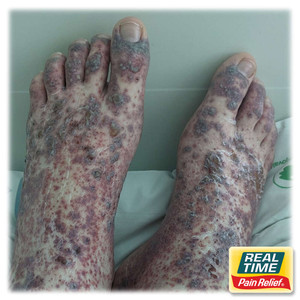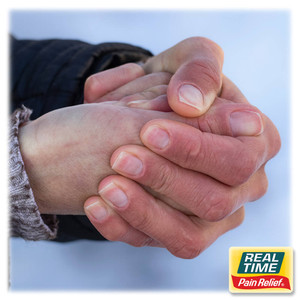6 Tips to Cope During a Rheumatoid Arthritis Flare-up
28th Jul 2023
Rheumatoid arthritis is an autoimmune disorder that is characterized by symptoms, such as joint pain, swelling, and stiffness. It can also affect other body parts and cause fatigue. According to the Arthritis Foundation, over 1.5 million people in the United States have rheumatoid arthritis
Symptoms of rheumatoid arthritis tend to come and go in severity. During a flare-up of symptoms, it can be challenging to keep up with all the demands life throws at you. Although resting is helpful, it is not always possible to completely change your level of activity. Still, it is vital to protect your joints and to find ways to deal with pain. Continue reading below to learn how to cope during a rheumatoid arthritis flare-up.
What Causes a Rheumatoid Flare-Up?
Rheumatoid arthritis may go into remission, which means symptoms decrease. In some cases, they may go away entirely. But symptoms may return during a flare. During a flare, symptoms may become severe.
Everyone with rheumatoid arthritis has their own unique experience with the condition. The frequency of a flare-up may vary. Additionally, the duration of a flare-up may also vary from a few days to several weeks or even months.
Symptoms of rheumatoid arthritis during a flare-up may include the following:
- Increased joint pain and swelling
- Problems participating in everyday activities
- Fatigue
- Widespread pain throughout the body
- Flu-like symptoms
It may sometimes be difficult to determine what led to a flare-up of symptoms. But certain factors can play a role in the exacerbation of rheumatoid arthritis symptoms, including:
- Stress
- Infections, such as the flu
- Poor sleep or sleep deprivation
- Overexertion
- Physical stress, such as an injury
6 Ways to Cope During a Flare-Up
Because life cannot always be put on hold, it’s essential to learn how to cope with a flare-up of rheumatoid arthritis symptoms. Self-care measures are a must. Below are several things you can do to deal with symptoms.
#1) Try to Identify Triggers
Since flare-ups can be predictable, it is helpful to keep a journal of when you have an increase in symptoms. Factors that trigger symptoms may differ from person to person. Once you determine what may have led to a flare-up, you can take steps to reduce your risk of having a rheumatoid arthritis flare.
#2) Consider Occupational Therapy
Occupational therapy for rheumatoid arthritis can be beneficial with learning new ways to do things. The therapist can help you find effective ways to minimize stress to your joints and perform everyday tasks. Talk to your doctor about finding an occupational therapist in your area.
#3) Use Assistive Devices
Assistive devices can make life easier during a flare-up. All types of devices are available to help with dressing, household tasks, and working. For instance, gadgets, such as extendable cleaning tools, can make chores easier.
When fingers are in pain, gripping tools and writing aids can help. Canes and shoe inserts can provide extra support for your feet and legs. Braces and splints can help painful joints rest and might reduce pain.
It might also be useful to arrange your home to make access to everything a bit easier. For example, consider using taller chairs that are easier to get out of or rearranging your kitchen so that everything is within reach.
#4) Practice Stress Relief Techniques
Stress can not only trigger a flare-up, but it may make symptoms worse or last longer. Although it is challenging to prevent all stress, finding healthy ways to relax can help shorten the duration of a flare-up or at least make it easier for you to cope with.
When it comes to stress relief techniques, you have several options. Techniques, such as mediations, progressive relaxation exercises, or deep breathing, may work for some people. For others, listening to music, talking with friends, or going for a walk may help reduce stress. Find what works for you, and try to do something relaxing on most days.
#5) Apply a Topical Pain Relief Lotion
According to the Arthritis Foundation, a topical pain relief lotion may help reduce pain associated with rheumatoid arthritis. With a pain-relief lotion for arthritis, you don’t have to worry about side effects that can occur with oral medications. When selecting a topical lotion, choose one with ingredients such as menthol, arnica, capsicum, and glucosamine.
#6) Incorporate Rest Times
Although it might not always be possible, do your best to try to incorporate rest times during a flare-up of symptoms. Allowing yourself enough time to rest may help you get over a flare-up quicker. For example, cut back on household chores. Accept help from others, and don’t worry about letting some things wait until you feel better. Make sleep a priority and try to get extra rest. Try to break your tasks into smaller steps and take your time completing things.





